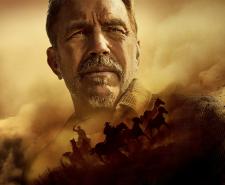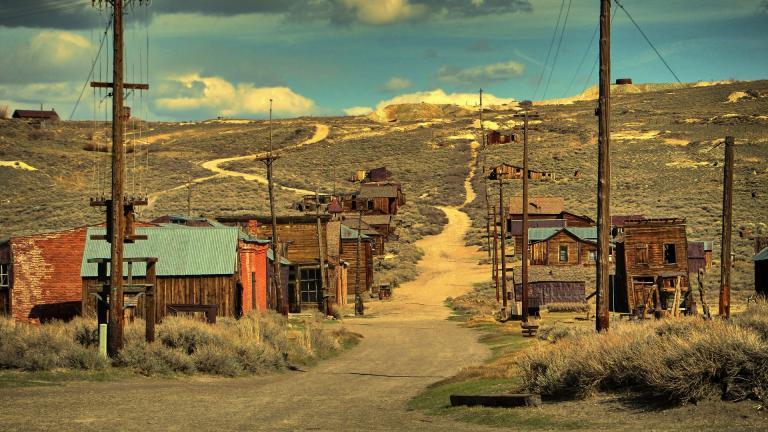
Read more about American History

You might think you know about the Wild West. This volatile period of American history, otherwise known as the ‘Old West’ or ‘American frontier’, has inspired an entire film genre, the Western.
However, public perceptions of the Old West are muddied by stereotypes, like cowboy hats and saloons — with early Western films often to blame. So, who better to set the record straight than actor Kevin Costner, who has long been committed to historical authenticity in his own Westerns?
Costner reflects: 'Everything that happened in Dances With Wolves or Open Range or Horizon actually happened out there. I didn’t make those stories up.' A new Sky HISTORY docuseries, Kevin Costner’s The West, dives further into the actual history.
Of course, if you haven’t given this era much scholarly attention, you could probably do with a crash course on it. In this article, Sky HISTORY sums up several of the major events as the United States (or earlier colonial powers) expanded westward.
Richard Bevan is an MA Screenwriter/playwright who has written for television, radio and stage. He specialises in history and true crime writing.
Every country has a creation myth. Britain has King Arthur, round tables and virtuous outlaws in green doublets. Being centuries old, we also benefit from the gold veneer offered by distance and time.
The United States’ creation myth is much more recent and well-documented, which gives it more of an immediacy and relevance. In fact, as the most powerful nation on the planet, what happened in the 'Wild West' in the 1800s, and how it has been interpreted, has real world ramifications for us today.
Gun laws, rugged individualism, masculine stoicism and distrust of central government often trace a lineage back to this period, but how much of this is based on fact?
There’s controversy about exactly when the Old West period began. The supposedly ‘lawless’ version of the Wild West somewhat depicted in early iconic Western films only really lasted from the 1860s to the 1890s.
In sharp contrast, many historians would date the beginning of the ‘great western migration’ as far back as 1607. This is when English colonists founded Jamestown, their first permanent settlement in North America.
Jamestown no longer technically exists, but was sited on the James River’s northeast bank in what is now the US state of Virginia.
By the 1750s, Great Britain and France had both colonised large parts of North America. These two European powers eventually came to blows in the Seven Years’ War.
On paper at least, the conflict ended in glorious triumph for the British and utter humiliation for the French. The latter agreed to surrender almost all their North American possessions to the British.
This left Britain holding all North American territory east of the Mississippi River. On the flip-side, Britain had spent big on waging the war and so was also now lumbered with eye-watering debt. In attempts to recoup its monetary losses, the British Crown started imposing new taxes on its North American subjects.
We all know how the United States of America came to be. It started with the ‘Thirteen Colonies’ protesting against ‘taxation without representation’
, as the colonials lacked representation in the British Parliament.
With Westminster stubbornly failing to adequately address this grievance, the American Revolutionary War broke out in 1775. It culminated in the Treaty of Paris eight years later, with Britain recognising the United States as a sovereign nation.
In 1803, Louisiana was French-owned territory. This land included New Orleans, which then-US President Thomas Jefferson hoped to purchase.
Consequently, Jefferson tasked James Monroe and Robert R Livingston with travelling to Paris and pleading the president’s case. At that time, France was under the iron grip of military dictator Napoleon Bonaparte, whose longing for fresh funds made him receptive to a deal.
In the end, Jefferson got not only New Orleans but also the entire Louisiana territory. This purchase cost the White House $15 million but essentially doubled the United States’ geographic size.
In 1848, California passed from Mexican to American hands. That same year, local builder James Marshall comes across a piece of shiny metal that turns out to be gold.
When news of this discovery spreads across the nation, a ‘gold rush’ begins. Thousands of aspiring prospectors make the trip to California — but, owing to poor transport options by modern standards, many don’t arrive until 1849. This earns them the nickname ‘the 49ers’.
The gold rush swells the local population size significantly, enabling California to be admitted as the 31st US state in 1950.
Today, Alaska is a US state, albeit geographically isolated from the rest. So, how did the US come to own it in the first place? To put a long story short, the US bought the territory from Russia.
This happened in 1867, when Czar Alexander II decided to offload the territory after his country’s defeat in the Crimean War. To seal the deal, the White House paid $7.2 million. Some critics at the time besmirched Alaska as useless, commentary that did not age well after the 1890s Klondike gold rush.
Kevin Costner and historian Doris Kearns have joined forces to present to the world the time and region of the United States that has most shaped its vision, identity and self belief with their brilliant series “The West”. London may have been laying track for the first Tube Trains at the time, but America was creating a nation from raw uncharted wilderness.
The scale of America’s westward expansion, the millions of people, the danger, the opportunities, the failures and triumphs are overwhelming. So Costner and Kearns have concentrated on eight stories with a beginning, middle and end. These stories are fascinating because they are so often not told. Real people, doing incredible things to survive and carve out a place for themselves in the West.
Don’t miss Kevin Costner’s The West, available from Monday 15th September. Want to keep up with more Sky HISTORY exclusives? Subscribe to our newsletter today to receive the latest news about more upcoming series delivered straight to your inbox.